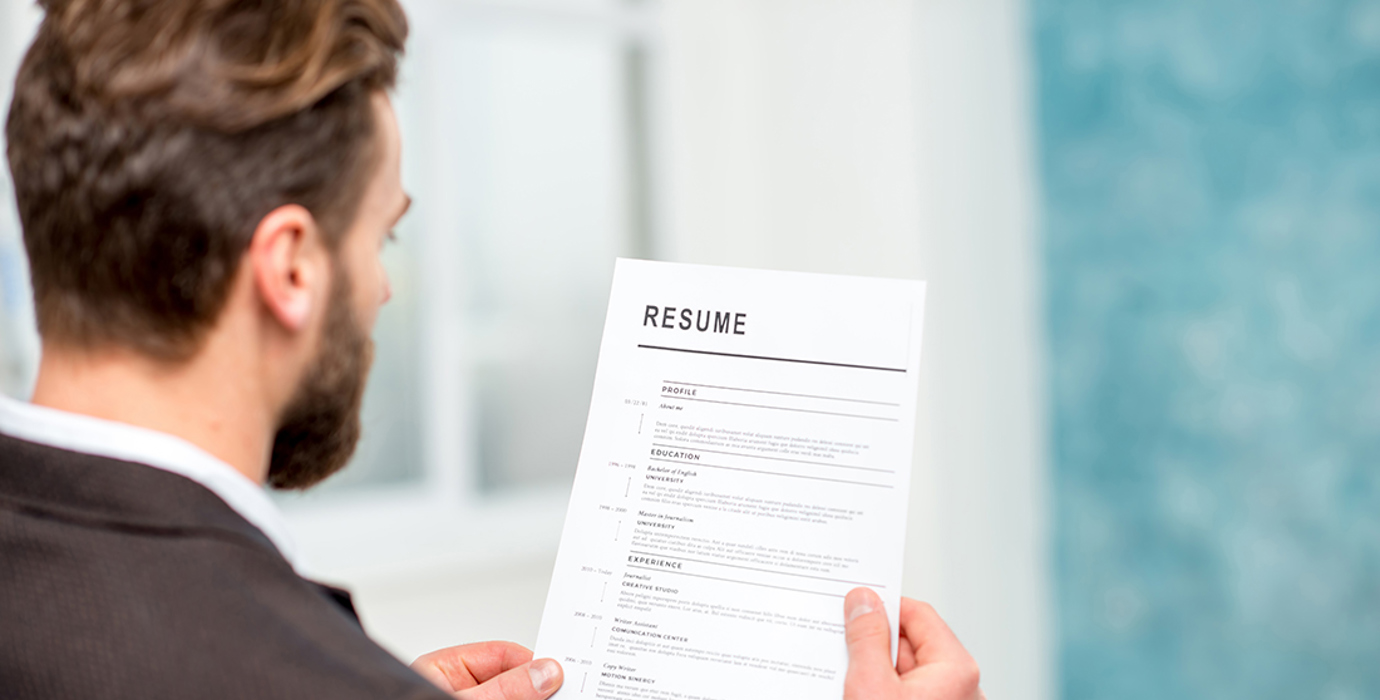You’ve completed your resumé and cover letter. Now it’s time to decide how to send them to the employer.
Job postings often tell you how you should submit your documents. Follow the format the employer wants—it shows you can follow directions. If you’re not sure of the format, contact the employer. Otherwise, your cover letter and resumé could meet an untimely end with a shredder or delete button.
The employer may ask you to submit your application in one of these ways:
Email attachment
Submitting your application by email lets you ask the employer to confirm that they received and can open your application. You can follow up with the employer if you do not receive a confirmation email.
You will need your own email address. Learn how to sign up for a free email account.
It's important to format your resumé and cover letter properly:
- Use standard word processing software, such as Microsoft Word. Most employers will have standard software. If you’re not sure, ask the employer. Or export your documents in a portable document format (PDF).
- Make sure the document is not password protected.
- Use standard fonts such as Times New Roman, Arial, Calibri, Helvetica, or Courier. Your cover letter and resumé should match.
- Keep underlines, graphics, and italics to a minimum. This prevents problems if the employer uploads the resumé into an applicant tracking system.
Always send your resumé as an attachment. It should never go in the body of your email.
Include your cover letter in your email. You have 3 options to include it:
- Put your cover letter in the body of the email.
- Use this sample email cover letter as a starting point to write your own.
- Don’t use the HTML (HyperText Markup Language) option when writing your cover email. It’s not compatible with all email programs and the employer may not be able to read your email. Instead, send your email as plain text or ASCII, which can be read by all email programs.
- Attach your cover letter as the first page of the same file that includes your resumé.
- Check that your page numbering is correct. The cover letter should not be a numbered page. Resumé pages should be numbered, with the first page of your resumé as page 1.
- Label the file according to the employer’s instructions. If the employer didn’t give instructions, label the file with your name and the word “Application.” Include “Posting ####” if a posting number is given. For example:
- Chris-Black-Application
- Chris-Black-Application-Posting-12345
- In the body of the email, introduce yourself and say that you have attached your cover letter and resumé in one file.
- Attach your cover letter as one file and your resumé as another file.
- Check that your page numbering is correct. The cover letter should not be a numbered page. Resumé pages should be numbered, with the first page of your resumé as page 1.
- Label your files according to the employer’s instructions. If the employer didn’t give instructions, label your files appropriately. Include “Posting ####” if a posting number is given. For example:
- Chris-Black-Cover-Letter
- Chris-Black-Resumé
- Chris-Black-Cover-Letter-Posting-12345
- Chris-Black-Resumé-Posting-12345
- In the body of your email, introduce yourself and say that you have attached your cover letter and resumé.
For your email’s subject line, follow the employer’s instructions. If the employer didn’t give instructions, write your name, the job title you’re applying for, and the job posting number, if available. For example:
- Chris Black – Administrative Assistant
- Chris Black – Administrative Assistant – Posting 12345
Do not leave the subject line or body of the email blank.
Website upload
On some employer and job search websites, you can upload your resumé and cover letter directly from your computer to the website. This is often as a PDF, Microsoft Word, or plain text document. Instructions on the website should tell you what format to use. If it’s not stated, ask the employer.
Which is better? Uploading vs. filling out a form
Do you have the choice of uploading your resumé or using an online application form or resumé builder? If you do, the better option is usually to upload. Uploading allows you to control how you present your qualifications. It doesn’t limit the amount of text you can use or your ability to use editing tools like spellcheck.
Online form
If the employer requires applicants to complete an online form or use a resumé builder, you may have 2 options.
You may be able to copy directly from a Word version or plain text version of your resumé and paste into the required online form.
- Review the pasted text carefully. Make sure it fits into the boxes, is spaced appropriately, and maintains correct formatting.
- Practise first. You can practise copying and pasting your resumé into a resumé builder at the Canada Job Bank You’ll need to register on the website to do this.
If you can’t copy and paste from your resumé, you will need to retype your information into the online form. Follow these suggestions:
- Take your time.
- Refer to your resumé as you type into the form.
- Tailor your resumé to fit the requirements of the form.
- Be sure to enter the correct information into the correct box or text field.
- Check spelling, grammar, and spacing before submitting the form. If possible, have someone proofread again once you’ve done your review.
Be careful. You will not be able to correct your application once you’ve submitted it.
Plain text
Using formatting such as bold text, different font sizes, bullets, and indenting makes your resumé look nicer. But if you’re submitting it through text-based forms on a website, your formatting might be lost. That can make your resumé hard to read. In these cases, you may need to prepare a plain text resume, also called an ASCII (American Standard Code of Information Interchange) resumé.
While many websites can decipher PDFs, plain text or ASCII is so basic that any operating system can read it. You can cut and paste from your ASCII resumé directly into the required fields of many online application forms. You can also upload your ASCII resumé directly to employers’ websites and to job search websites.
To create an ASCII document:
- Use standard fonts such as Times New Roman, Arial, Calibri, Helvetica, or Courier.
- Don’t use graphics, shading, text boxes, tabs, tables, or columns.
- Don’t bold, underline, or italicise your text.
- Use asterisks rather than bullets.
- Align the text to the left margin.
- Save a copy of your plain text resumé by using the Save As function to save it as a plain text file (.txt).
See a sample of a plain text resumé.
Print document
While many employers rely heavily on online applications, some intentionally ask you to fill out forms by hand. As well, submitting a printed resume in person gives you a chance to make a more personal impression. If you’re already a customer of the business or members of your network are employed there, it allows you to build on those relationships.
- Use standard fonts such as Times New Roman, Arial, Calibri, Helvetica, or Courier.
- Keep underlines, graphics, and italics to a minimum. This prevents problems if the employer scans the resumé into an applicant tracking system.
- Check that your page numbering is correct. Your cover letter should not be a numbered page. Resumé pages should be numbered, with the first page of your resumé as page 1.
- Print your documents single-sided
- Use good quality, 8.5 x 11-inch paper.
- Use white or buff paper. Avoid coloured or textured paper.
- Make sure all copies are clean and bright.
- Attach your cover letter to the front of your resumé.
- Paper clip, rather than staple, the pages together.
- Don’t bind your documents unless the employer requests it.
- Don’t fold your documents.
- Mail your resumé and cover letter in a 9 x 12-inch envelope, or deliver it in person.
Alternative formats
Many employers consider resumés in other formats and media, such as USB sticks, videos, and websites, as non-standard. They won’t visit a website, click through a menu, or wait for a download to look at your resumé. It’s best to send your resumé in a familiar format that’s easy to access.
However, a creative field such as marketing, web design, or communications may give you more leeway. If you think another format is the best way to present yourself, consider these tips:
- Talk to people in your industry. Ask for their advice.
- Submit your resumé in a standard format and include the other format as part of your portfolio.
- Avoid using your image in the resumé unless you’re in a field such as theatre or broadcasting. Because of human rights concerns, many Alberta employers prefer to assess you without knowing details about your gender, age, race, and so on.
Always send your cover letter and resumé to an employer in the way they’ve instructed in the job posting. Every step of the job application is a chance to show the employer that you’re a good fit for the company. Make their first impression of you a good one.




